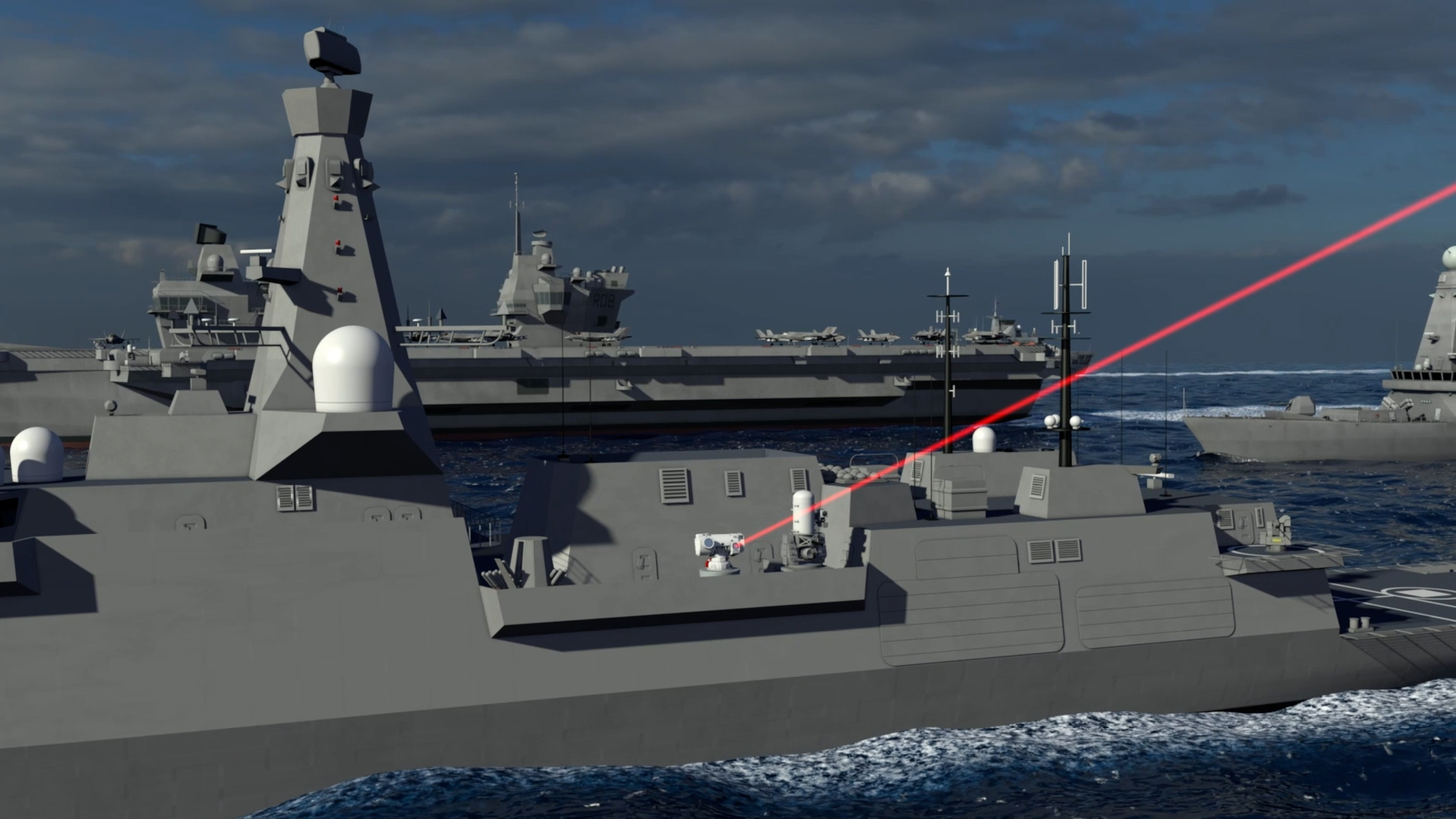A powerful laser weapon will be added to the Royal Navy’s arsenal in the next three years as the need for weapons to counter drone and missile threats – like those fired by Houthi rebels – grows.
The cutting-edge DragonFire laser will be installed on a warship in 2027, adding to the Royal Navy’s potent array of air defence weaponry, which includes the Sea Viper and Sea Ceptor missile systems which have recently shot down Houthi targets in operations in the Red Sea with HMS Diamond and HMS Richmond.
A burst of the high-intensity beam from DragonFire costs no more than £10 – yet can engage targets – drones, missiles, aircraft – at the speed of light by concentrating it on a target.
The laser has been under development for nearly a decade and underwent tests by government scientists on the Ministry of Defence’s ranges in the Hebrides at the start of this year.
Now, plans have been brought forward five years from 2032 to install DragonFire on a Royal Navy ship under new procurement rules which were introduced this week.
Captain Matt Ryder, responsible for new capabilities as Head of Above Water Battlespace in the Royal Navy’s Develop Directorate, said: “The Royal Navy has always been on the front foot to embrace new technologies to enhance our capability.
“We recognise this cutting-edge UK laser weapons technology as highly relevant and the need to accelerate it into service on board our ships at the earliest opportunity.
“Clearly a current operational focus is on protecting Freedom of Navigation in the Southern Red Sea as part of Operation Prosperity Guardian, where in recent months HMS Diamond and HMS Richmond have each successfully deployed Air Defence capabilities to defend legitimate shipping in the area against drone and missile threats.
“Noting the quantity and varied sophistication of air and missile threats seen in the Southern Red Sea, we see a very relevant and current example of where laser weapons could provide an additional layer of defence to protect shipping, at a potentially much lower cost per shot and without the inherent onboard magazine and silo capacity constraints associated with interceptor missiles.”
The current missile systems remain highly relevant and will continue to be a core component of the Royal Navy’s air defence capability, especially with further investment in Sea Viper to defeat ever-evolving threats.
DragonFire has been developed by the Defence Science and Technology Laboratory (Dstl), on behalf of the UK MOD, working with its industry partners MBDA, Leonardo, and QinetiQ.
Dstl’s Chief Executive Paul Hollinshead said: “This is excellent news, and a real step forward in enabling operational advantage at pace for UK Defence. Dstl is all about preparing for the future and the DragonFire technology is a great example of that.
“Our scientists along with industry partners have worked tirelessly to bring laser technology to where it is today, one which I am proud to say is a UK sovereign capability.”
Defence Secretary, Grant Shapps said: “In a more dangerous world, our approach to procurement is shifting with it. We need to be more urgent, more critical and more global.
“Our widespread reforms will deliver the latest kit and weaponry for our Armed Forces faster and help identify export opportunities that can boost the UK economy.
“DragonFire shows the best of the UK at the forefront of military technology, and we will not delay in getting it in the hands of our military to face down the threats we’re facing.”
Article provided by Royal Navy




Leave A Comment